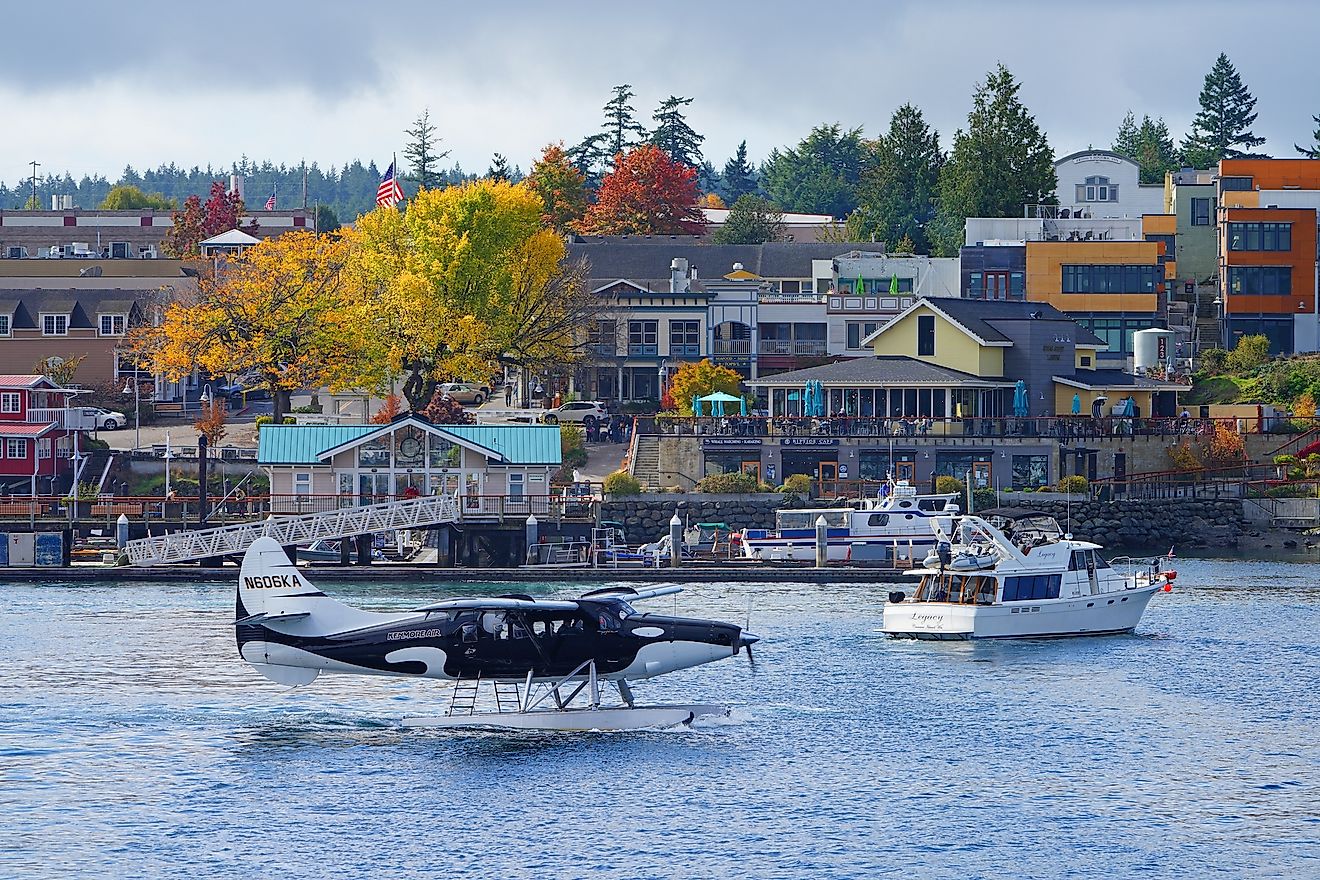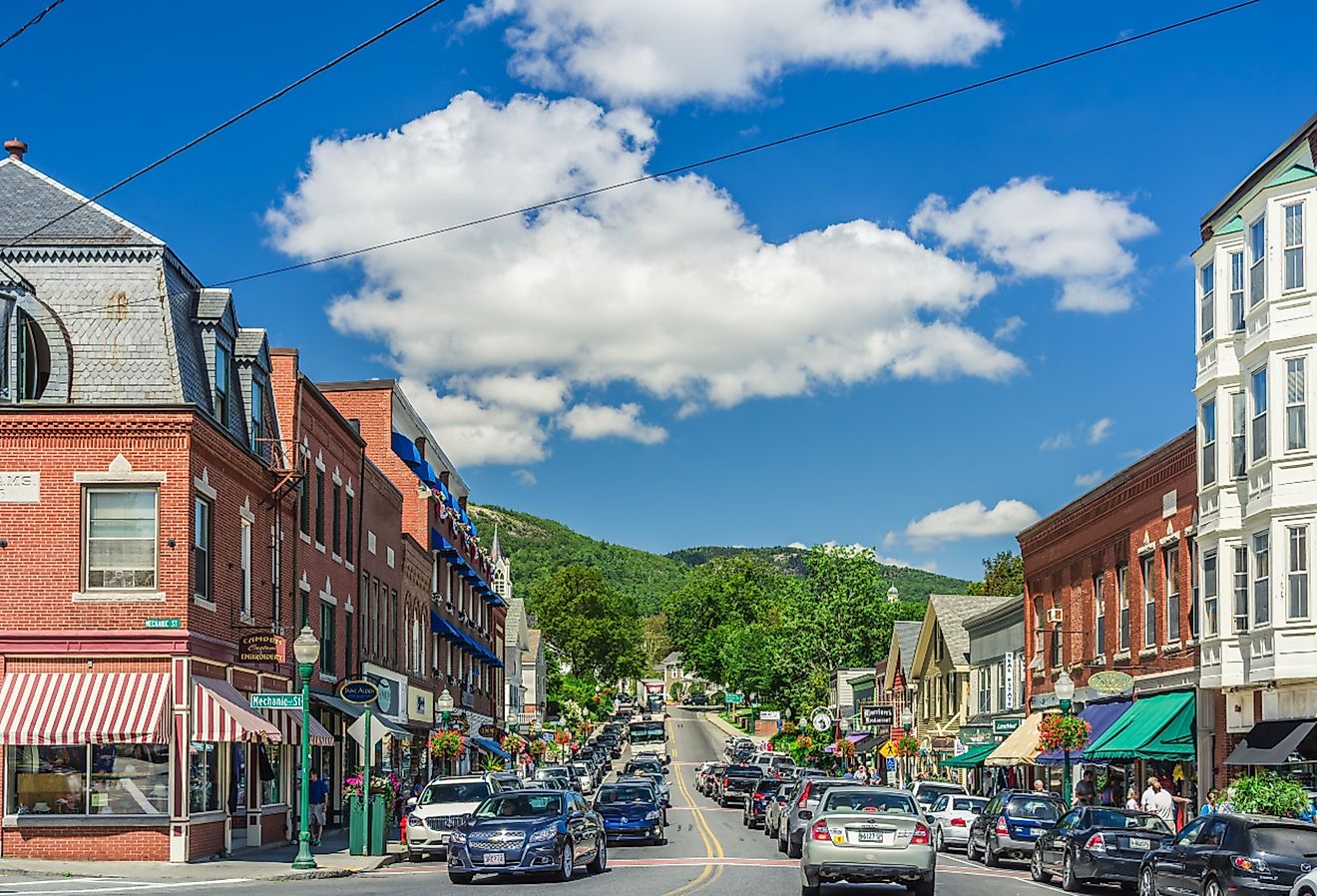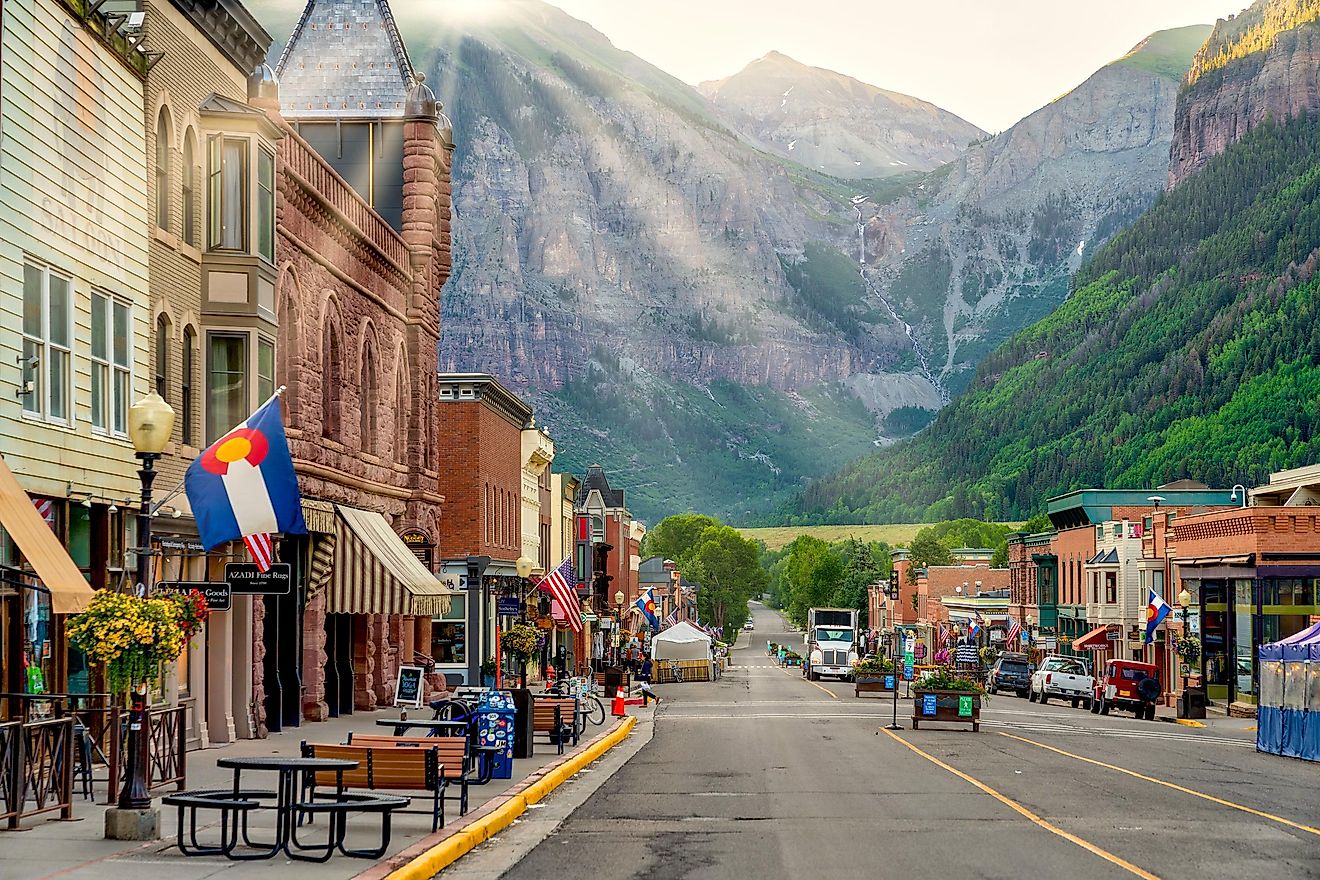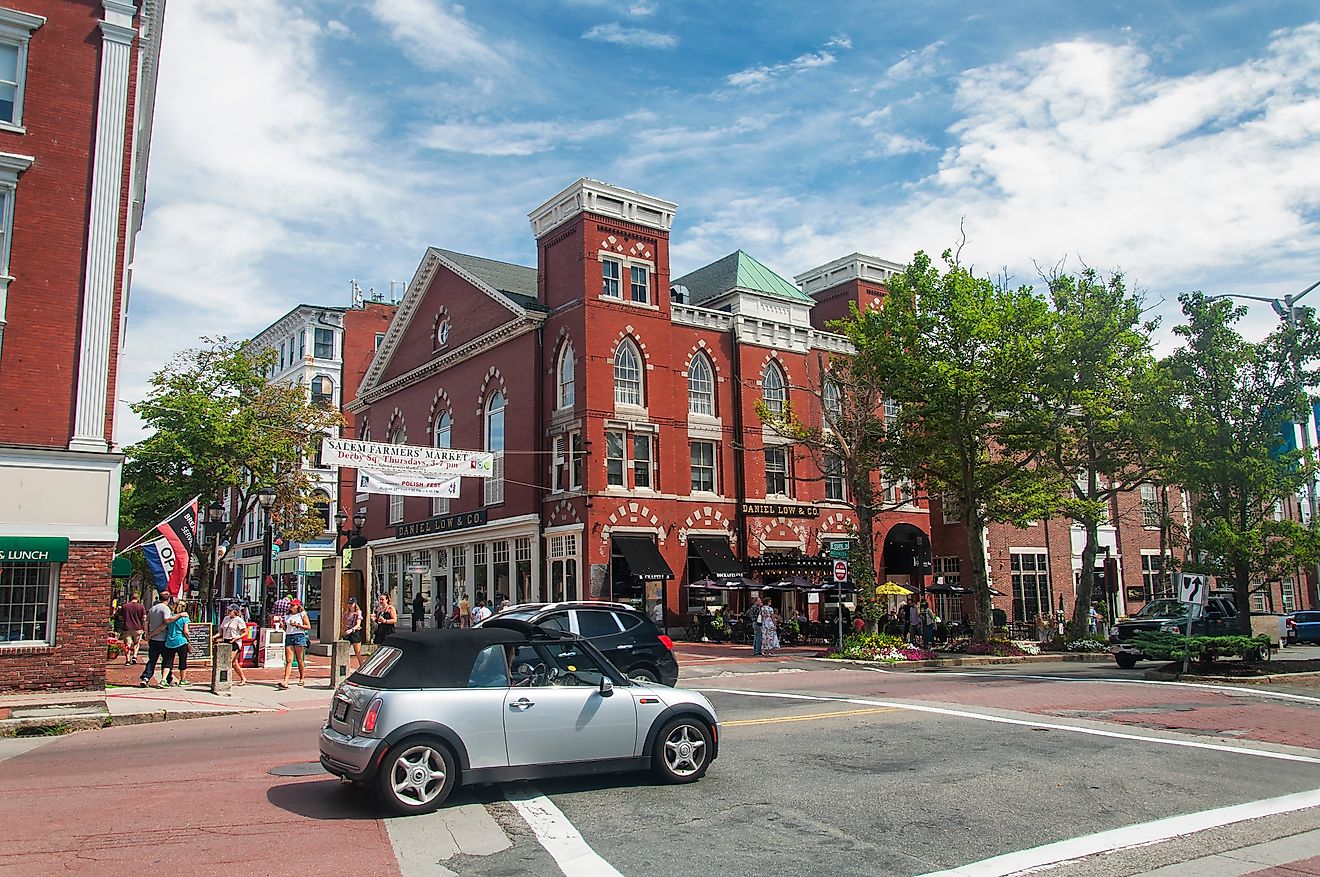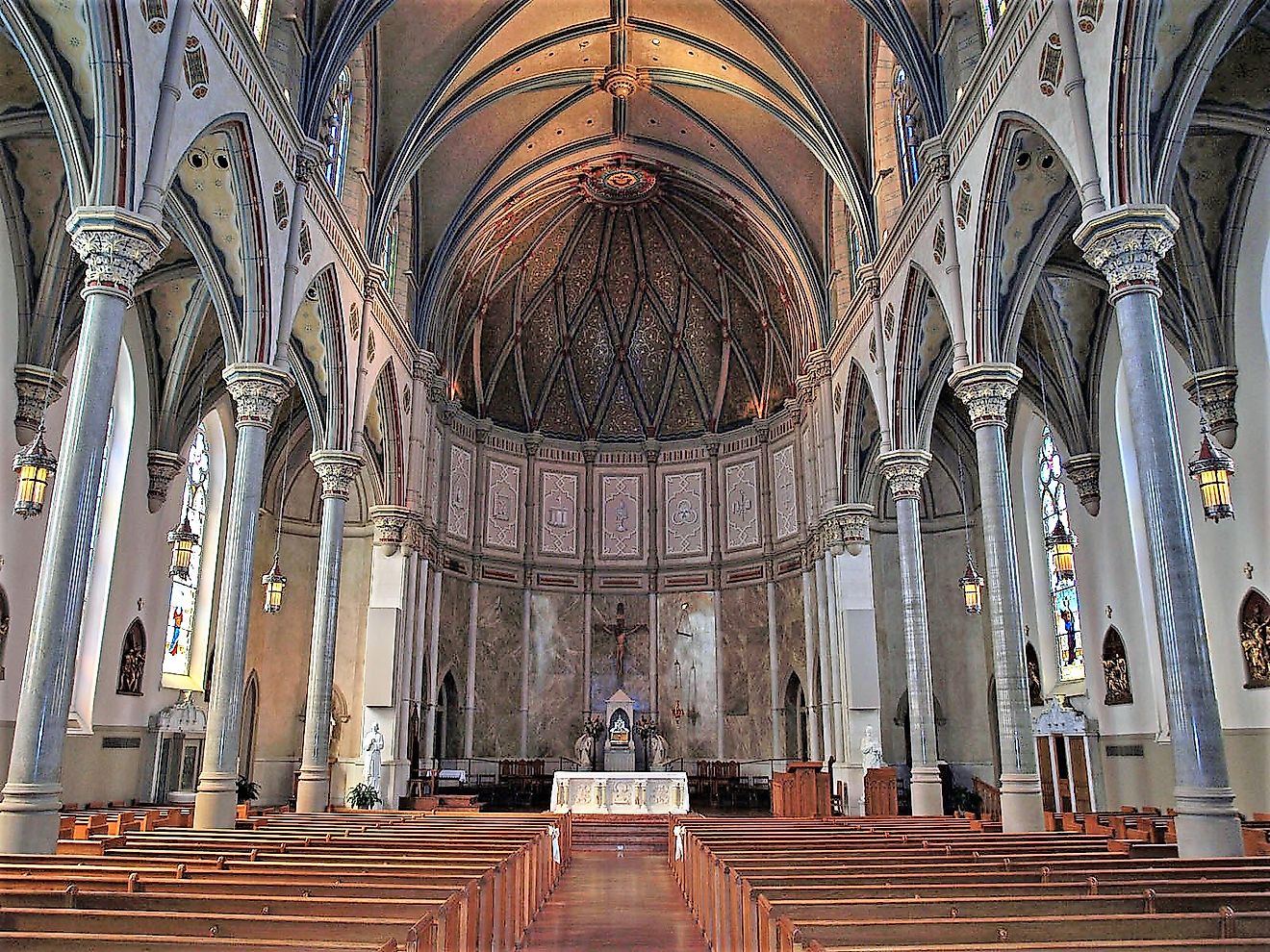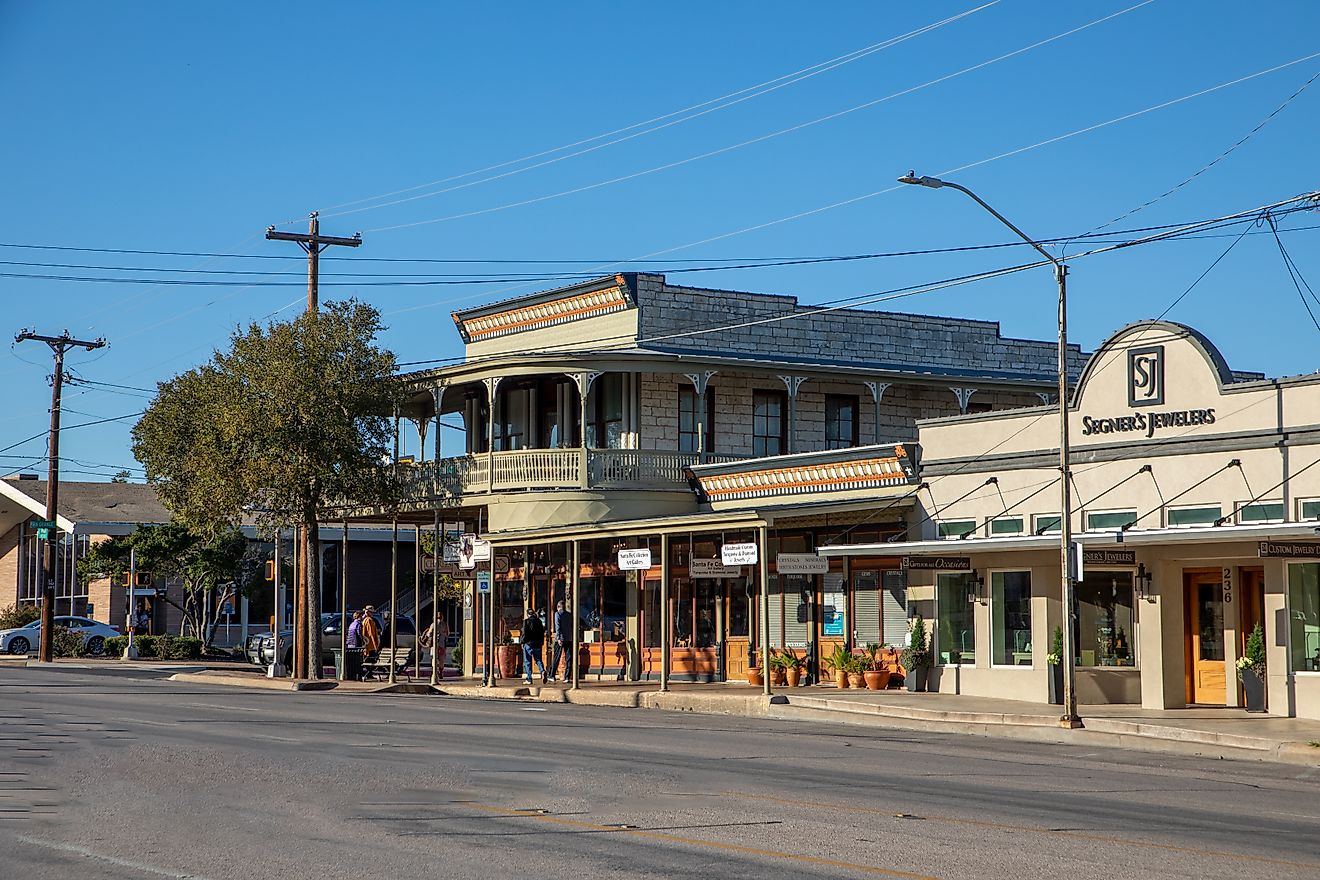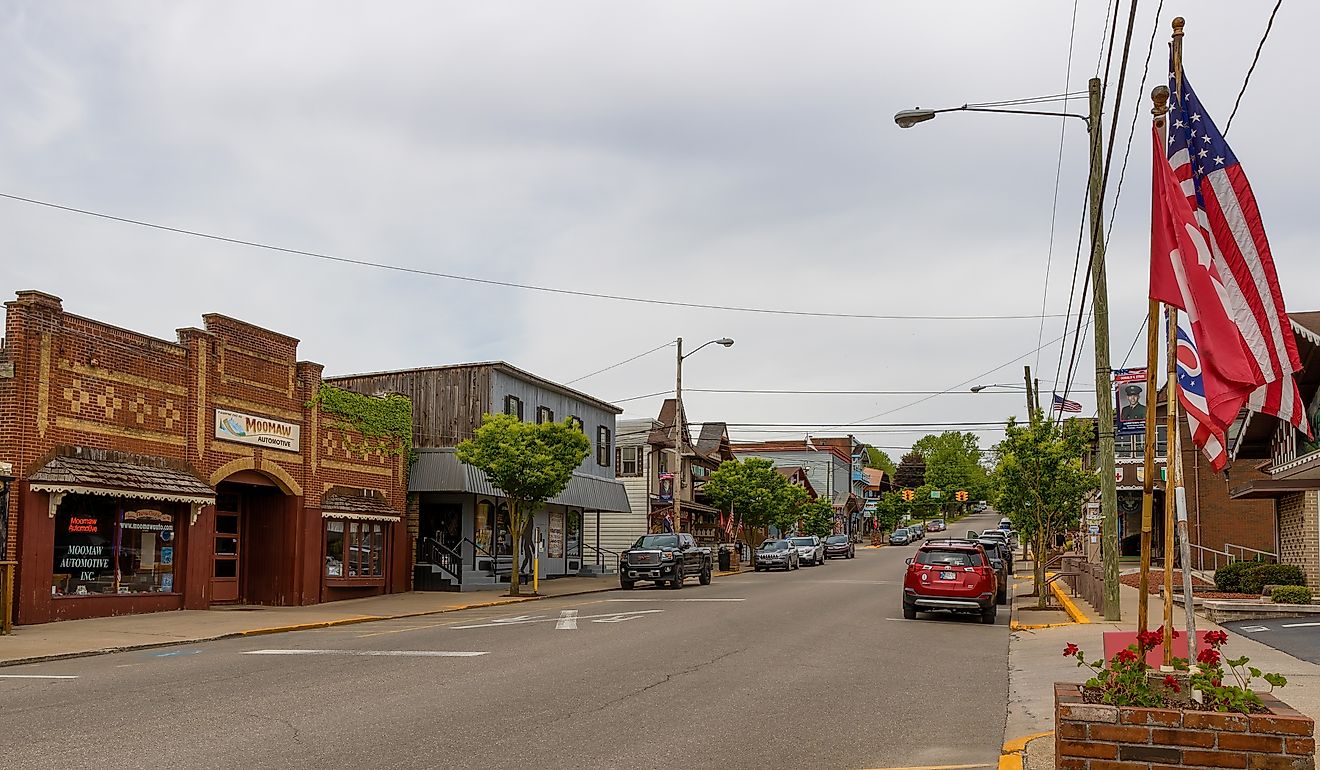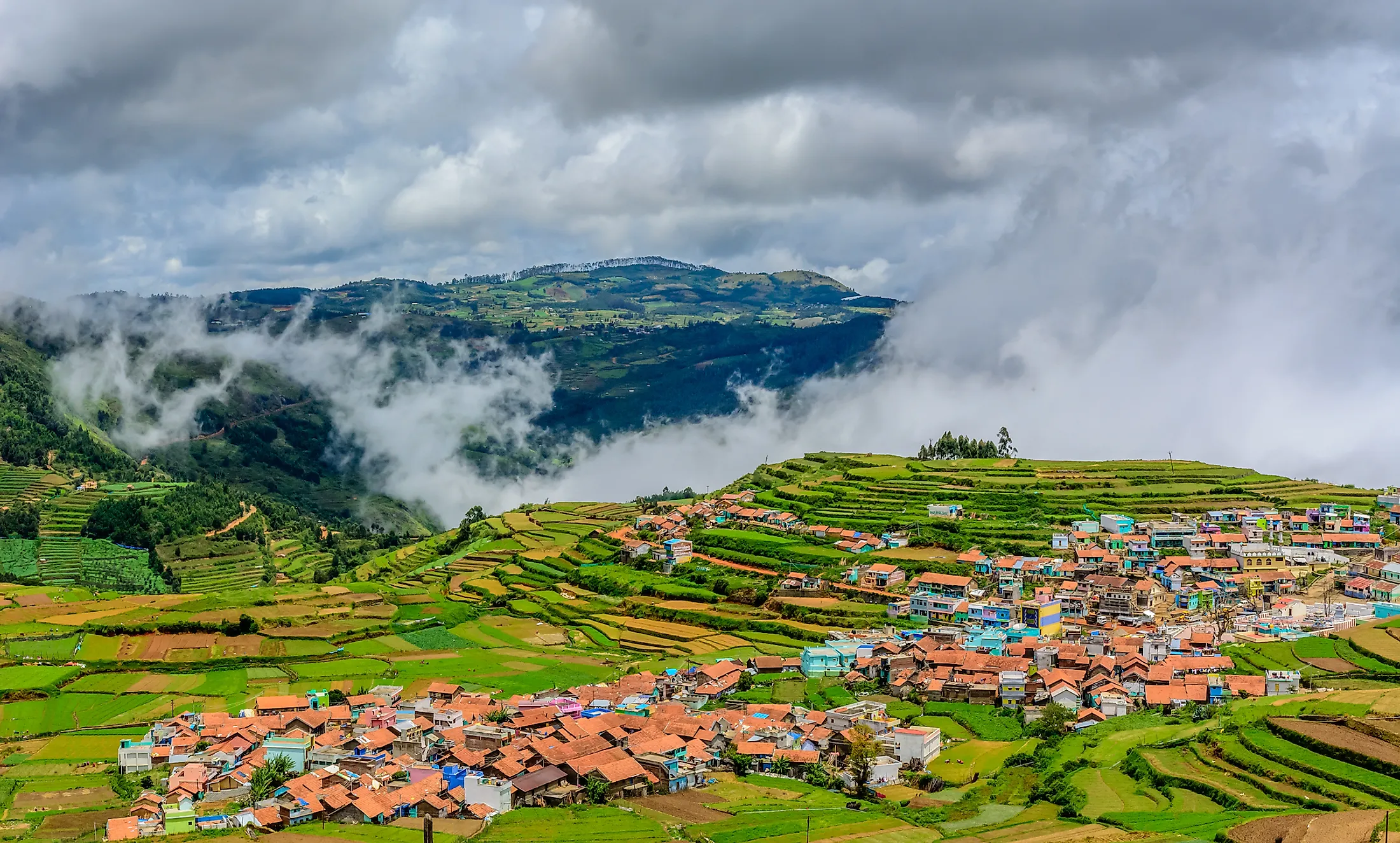
Ooty, India
Nestled in the Nilgiri hills at an elevation of about 2,240m, Ooty (Udhagamandalam) is one of the most popular hill stations in India. It is located in the Nilgiris District of the Indian State of Tamil Nadu. Also referred to as the “Queen of the Western Ghats,” the lush green hills, tea plantations, well-known tourist spots, and a pleasant climate make Ooty one of the most favorite summer destinations for the locals and thousands of international tourists.
Geography Of Ooty
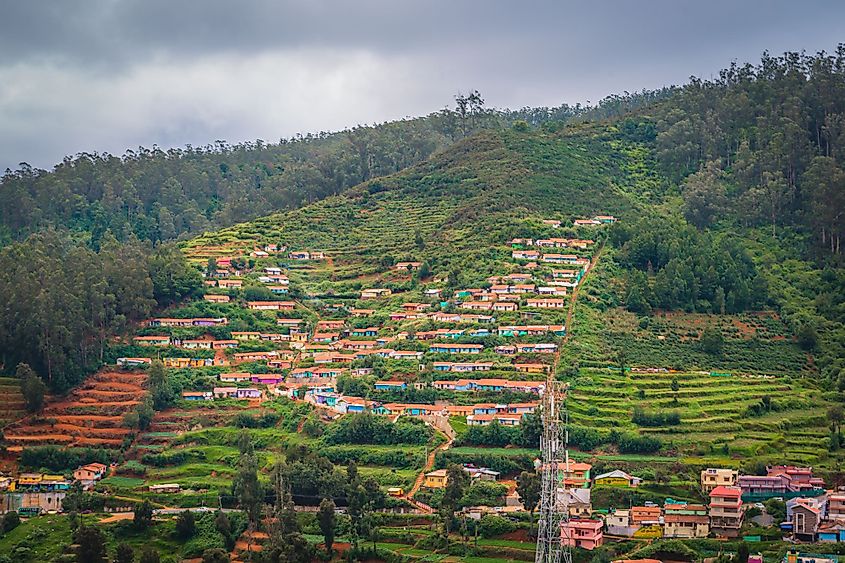
The small city of Ooty is located in the Nilgiri Hills at an elevation of 2,240m, in the western part of the Indian State of Tamil Nadu. Ooty serves as the administrative headquarters of the Nilgiris district and covers a total area of 36 sq. km. It is situated about 128km south of Mysuru, 86km northwest of Coimbatore, 31km from Kotagiri, 19km from Coonoor, and 50km from Gudalur. Ooty is also located approximately 260km from Bengaluru, 598km from Chennai, 135km from Malappuram, and 110 km from Wayanad.
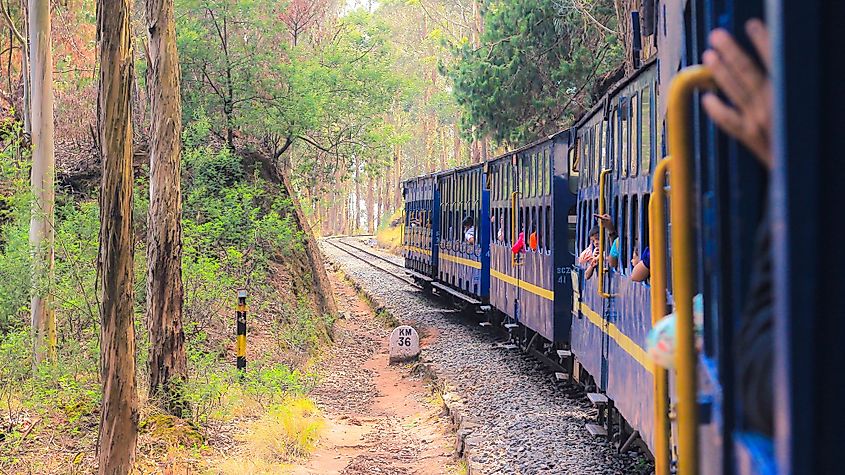
The city is well connected by roadways, railways, and aviation facilities with the nearby places and other metro cities of India. Ooty is linked by the Nilgiri ghat roads and the famous Nilgiri Mountain Railway - a UNESCO World Heritage Site and one of India’s oldest mountain railways. Located on the Ooty-Kotagiri Road about 9km from Ooty is Doddabetta mountain peak, which rises to an elevation of 2,637m and is the fourth highest peak in South India and the highest point in the Nilgiri Mountains. This spectacular “Queen of Hill Stations” also forms a part of the Nilgiri Biosphere Reserve, which is well-known for its fragile and exquisite ecosystem.
Climate
As per the Köppen climate classification, Ooty experiences a subtropical highland climate. Despite its location in the tropics, Ooty enjoys a mild and pleasant climate throughout the year. The temperatures remain pretty constant all through the year, with average high temperatures ranging from 17°C to 20°C and average low temperatures ranging between 5°C to 12°C. Ooty receives an average annual precipitation of about 105cm, with the wet season being relatively cooler, humid, and very windy. The city experiences a well-marked dry season from December to March.
Demography And Economy Of Ooty
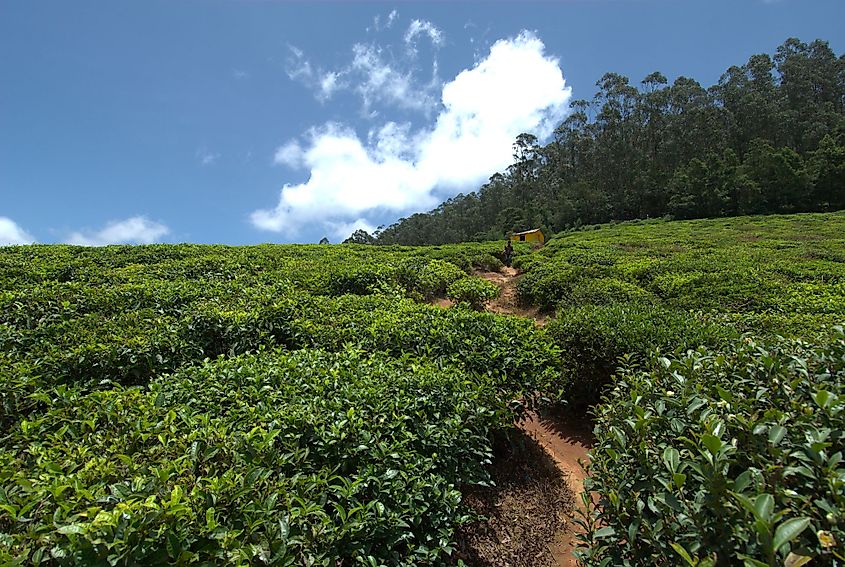
As per the 2011 census, Ooty (Udhagamandalam) is home to 88,430 people, of which 45,348 are females, and 43,082 are males. About 64.36% of the city’s population are Hindus, 21.25% are Christians, 13.37% are Muslims, 0.03% are Sikhs, 0.30% are Buddhists, 0.40% are Jains, and 0.02% are following other religions. Even though Tamil is the official and most widely spoken language in Udhagamandalam, other languages like Badaga, Kannada, Malayalam, and English are also spoken.
The economy of Ooty is mainly driven by tourism, agriculture, the manufacture of medicines, cordite, needles, and photographic films. Some of the major crops grown in Ooty include vegetables like cabbage, cauliflower, carrot, and potatoes; and fruits like strawberries, pears, peaches, and plums. The local area is also well known for cultivating tea, which is economically grown in various places of the Nilgiris District, including Ooty, Coonoor, and Kotagiri. The perfect climatic conditions, elevation, and soil conditions provide flavor to the tea grown in these areas. Several cottage industries are located in and around Ooty that manufacture and number of essential goods such as carpentry products, pickles, and homemade chocolates. Besides this, needles are manufactured in Ketti Valley, cordite in Aruvankadu, human rabies vaccine by the Human Biologicals Institute, and photographic films by the Hindustan photo films.
Tourist Attractions In Ooty
Government Rose Garden
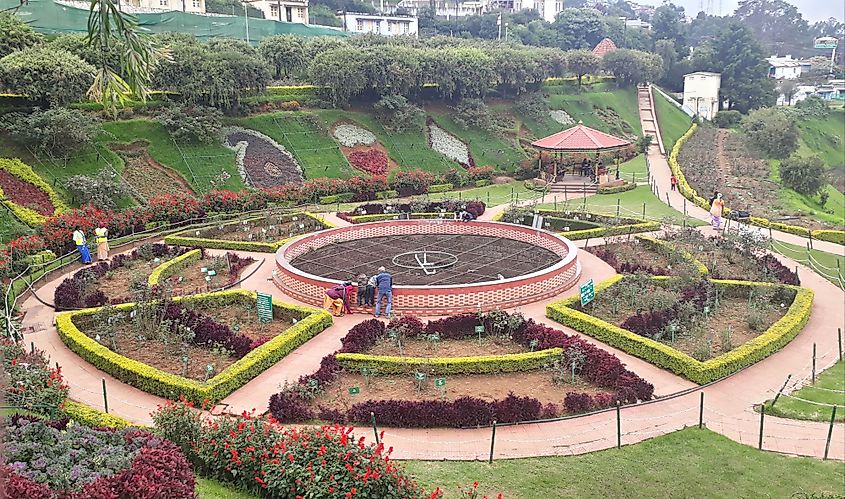
Located in the heart of Ooty, the Government Rose Garden is a popular tourist attraction and one of the most extensive rose gardens in India. The Government Rose Garden is situated at an elevation of 2200m on the lower slopes of Elk Hill at Vijayanagaram in Ooty. This beautiful garden covers an area of 4 hectares and houses a vast collection of a unique variety of roses, including hybrid tea roses, miniature roses, garden roses, floribunda, rambler roses, black and green roses, etc. At present, the garden supports over 20,000 varieties of roses of 2,800 cultivars. The tourists can get a view of the entire rose garden from an observation platform on the slopes of the garden named “Nila Maadam.”
Government Botanical Garden
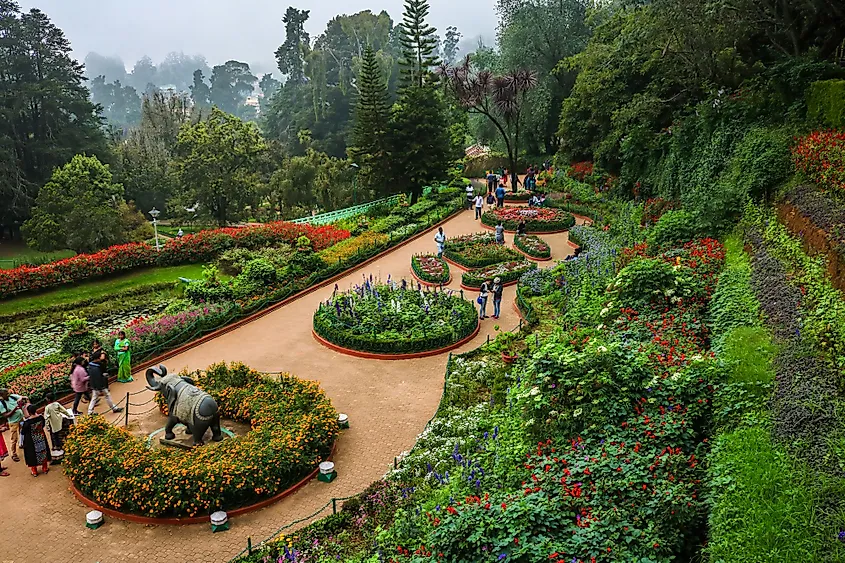
Situated on the lower slopes of the Doddabetta mountain peak, the Government Botanical Garden is a well-maintained garden covering about 89,000 sq.m. The botanical garden is currently divided into five sections: the Italian Garden, Lower Garden, New Garden, nurseries, and the Conservatory. Maintained by the Tamil Nadu Horticulture Department, the botanical garden houses a rich collection of native and exotic plants, including herbal and bonsai plants, shrubs, ferns, and notable trees such as the Cork Tree, the Monkey puzzle tree, and the Paper Bark Tree. A 20-million-year-old fossilized tree trunk is located at the center of the botanical garden.
Ooty Lake
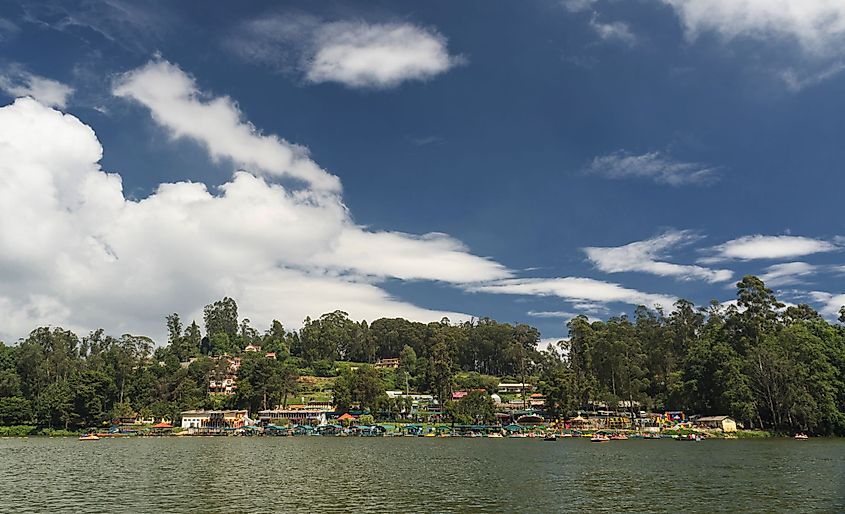
Covering an area of only 0.26 sq. km, Ooty Lake is an artificial lake constructed by John Sullivan by damming the water flowing down the mountain streams into the Ooty Valley. Managed by the Tamil Nadu Tourism Development Corporation, the boathouse adjoining the lake offers boating facilities with different types of boats, including paddle boats, rowboats, and motorboats for the tourists. Located on the fringes of the Ooty Lake is a Deer Park, maintained by the Tamil Nadu Forest Department, that houses many deer species besides other fauna.
Pykara Lake
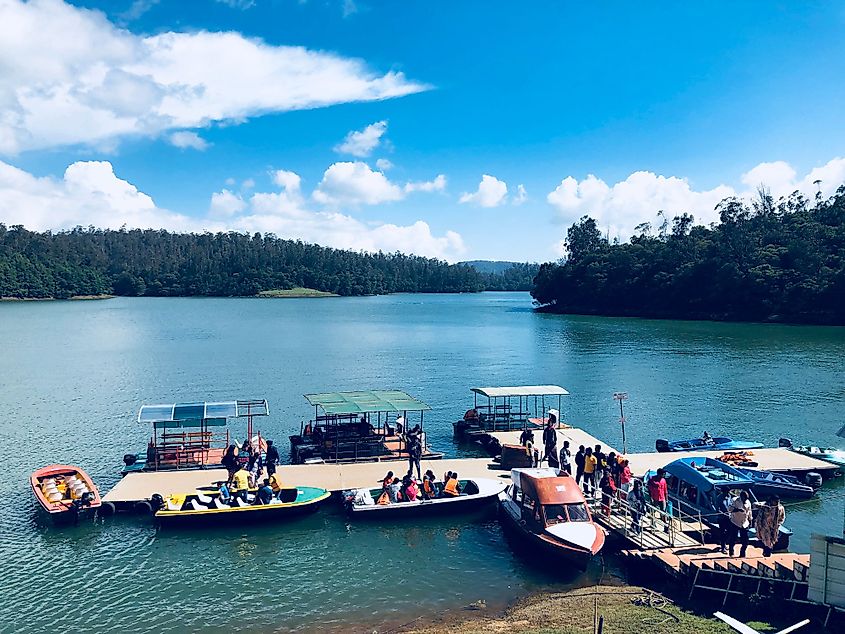
The picturesque Pykara Lake is a popular tourist attraction located about 20km from Ooty. Pykara is the largest river in the Nilgiris District that originates from the Mukurthi peak and then flows through the hilly terrain to reach the edge of the plateau, where it flows over a series of tall waterfalls. The Pykara River also flows through several dams and forms a vital part of a hydroelectric power project. The Pykara Falls, Dam, and the Pykara Lake attract many tourists. A boathouse maintained by the Tamil Nadu Tourism and Development Corporation on the Pykara Reservoir offers boating facilities for tourists.
Toda Huts and Tribal Museum
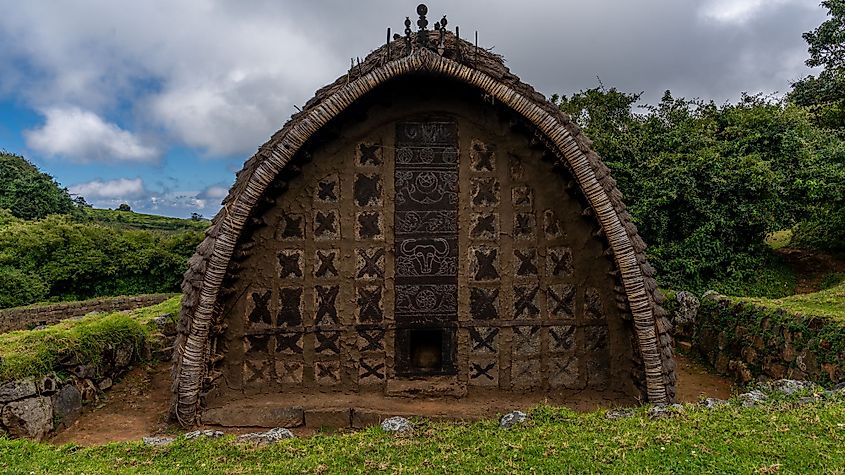
Located on the hills above the Government Botanical Garden are a few Toda huts, in which the indigenous Toda people still reside. The Tribal Museum is situated in Muthorai Palada, about 10km from the Ooty Central Bus stand, and forms a part of the Tribal Research Center campus. The museum preserves the cultural heritage of the tribals and exhibits rare artifacts like traditional utensils, ornaments, weapons, pottery, etc. In addition to this, tribal photographs from the Union Territory of Andaman & Nicobar Islands and the other Indian States are also exhibited in the Tribal Museum.
St. Stephen’s Church
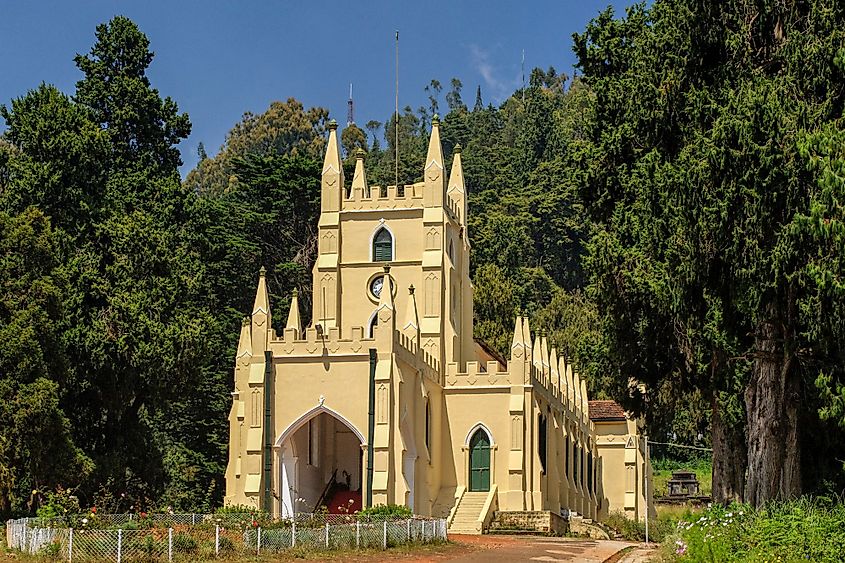
Situated on the road to Mysuru in Ooty, the St. Stephen’s Church is one of the oldest churches in the Nilgiris district. The church’s foundation was laid on April 23, 1829, by Stephen Rumbold Lushington, who served as the Governor of Madras. St. Stephen’s Church features stained glass windows that depict various scenes like Mother Mary holding baby Jesus, the crucifixion of Christ, and a painting of The Last Supper.
Mudumalai National Park
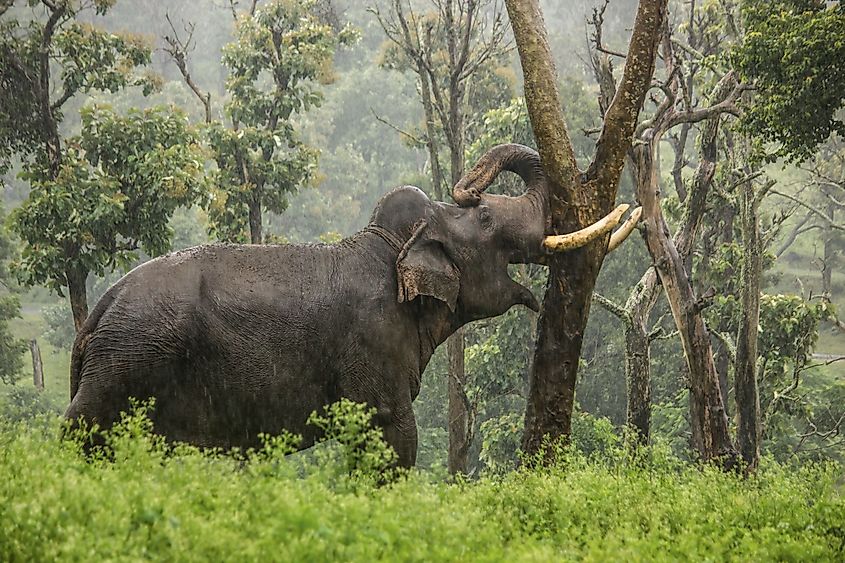
Covering an area of 321 sq. km, the Mudumalai National Park is located approximately 31km from Ooty, on the northwestern side of the Nilgiri Hills. The national park is home to many animals, including Bengal tigers, Indian leopards, Asian elephants, Nilgiri marten, golden jackal, jungle cat, stripe-necked mongoose gaur, sambar deer, chital, Indian muntjac, Indian giant squirrel, etc. The Mudumalai National Park also supports several resident and migratory birds. About 38 species of fish have been recorded from the Moyar River and its tributaries that flow through the National Park.
Brief History
It is believed that the present Ooty area initially was a tribal land that was occupied by the indigenous Todas and other ancient tribes like Badagas, Kotas, Panias, Kurumbas, and Irulas. The area was referred to as “Ottakal Mandu” in earlier times. The name “Udagamandalam” has been derived from “Ottakal Mandu,” where “Oththai-Kal” means “single stone” and “Mandu” refers to a Toda village. The Nilgiris were ruled by various Southern dynasties, including the Satavahanas, Kadambas, Hoysalas, Gangas, Rashtrakutas, Rajas of Ummattur, and the Vijayanagara Empire. In the 18th century, the Nilgiris was occupied by Tipu Sultan – the ruler of the Kingdom of Mysore. In 1799, after the Treaty of Srirangapatnam, the Nilgiris came under the possession of the British East India Company. During British rule, the area's name changed from Udhagamandalam to Ootacamund and eventually to Ooty.
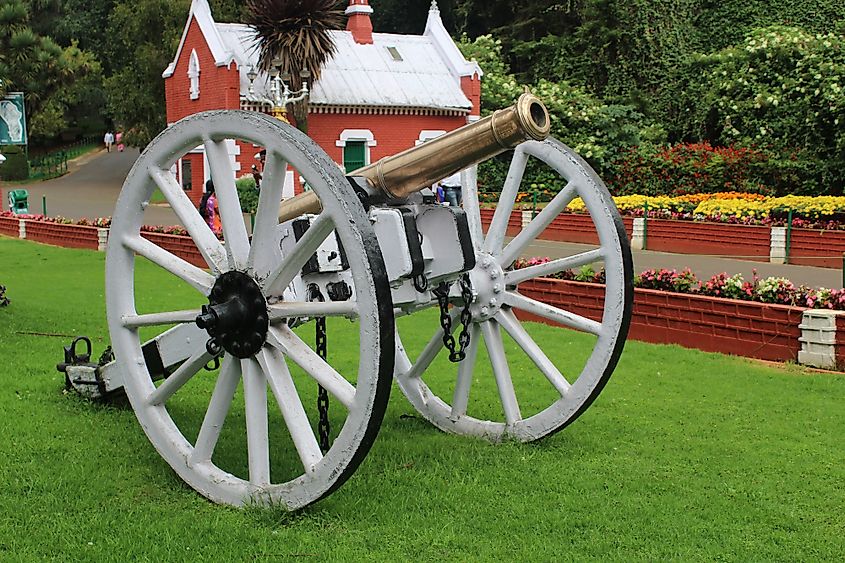
In January 1819, Sir John Sullivan, the then collector of Coimbatore district, was mesmerized by the natural beauty and the serenity of the place while camping at Dimbhatti. In May 1819, this part of the town was handed over to Mr. Sullivan by the Todas. In 1822, Mr. Sullivan constructed the first bungalow in Ooty called the “Stone House.” Mr. Sullivan also started building a road from Sirumugai to Dimbhatti, which was later extended up to Coonoor. Ooty also served as a popular summer resort during the colonial era and as the summer capital of the Madras Presidency. After the Indian Independence, Ooty developed into a well-known tourist destination.

